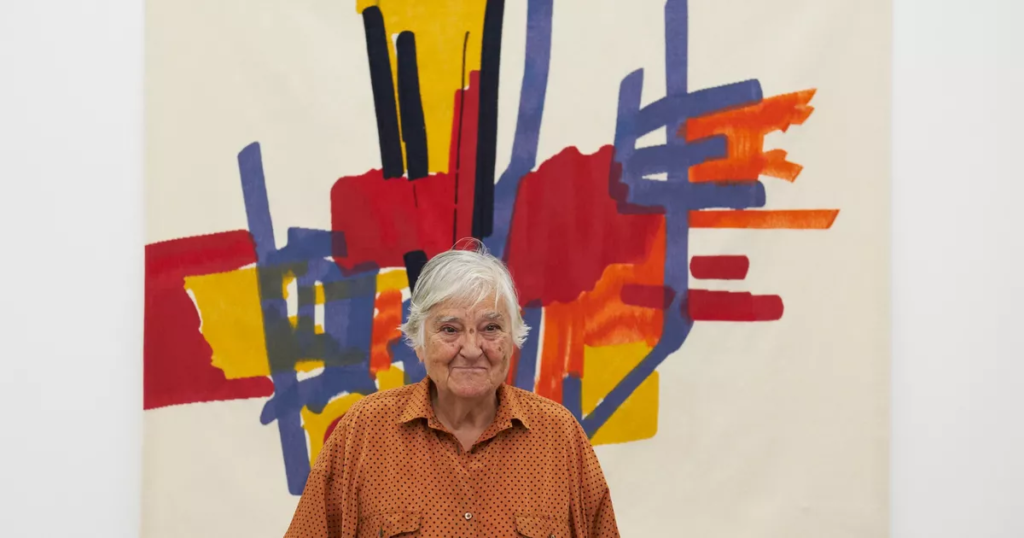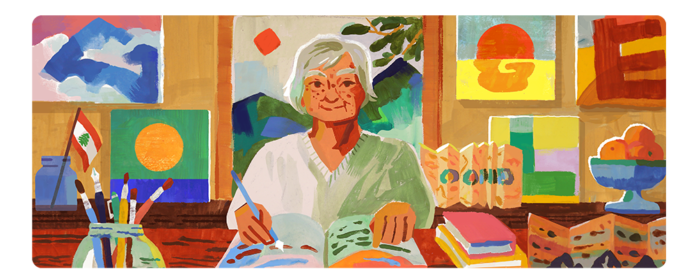Introduction
Etel Adnan was a remarkable artist, poet, and writer whose work transcended cultural and linguistic boundaries. Born in Lebanon and educated in France and the United States, Adnan’s diverse background greatly influenced her creative output, making her a unique voice in the world of art and literature. Her work, which spans several decades, is celebrated for its exploration of identity, memory, and the human experience. In this article, we’ll delve into the life and legacy of Etel Adnan, exploring how her artistic and literary contributions have left an indelible mark on the world.
Early Life and Education
Etel Adnan was born on February 24, 1925, in Beirut, Lebanon, to a Syrian father and a Greek mother. Growing up in a multilingual household, Adnan was exposed to a rich tapestry of cultures from an early age. Her father was a high-ranking officer in the Ottoman Empire, while her mother, who spoke Greek and Turkish, contributed to Adnan’s early linguistic diversity.
Adnan’s education began in Lebanon, but she later moved to France, where she attended the Sorbonne University in Paris. There, she studied philosophy, an interest that would later permeate her writing and art. After completing her studies in France, Adnan moved to the United States, where she continued her education. At the University of California, Berkeley, and Harvard University. This international education played a significant role in shaping Adnan’s worldview. Infusing her work with a deep understanding of different cultures and philosophies.
The Artistic Journey of Etel Adnan
Painting: A Love for Color and Landscape
Etel Adnan’s journey as a painter began relatively late in life, in the 1960s, while she was living in California. Adnan’s paintings often feature bold, abstract landscapes, with a particular focus on Mount Tamalpais. A mountain near her home in Sausalito, California. This mountain became a recurring motif in her work. Symbolizing not only the physical landscape but also the inner landscapes of memory and emotion.
Adnan’s approach to painting was deeply intuitive. She used color to convey emotion and experience, often working with oil paints directly from the tube onto the canvas with a palette knife. This technique gave her work a distinctive texture and immediacy, reflecting the spontaneity and vibrancy of her creative process.
Writing: A Voice of Exile and Identity
In addition to her visual art, Etel Adnan was a prolific writer. Her literary work includes poetry, essays, and novels, often written in French, English, and Arabic. Her multilingualism allowed her to bridge cultural divides, making her work accessible to a broad audience.
One of Adnan’s most famous works is the novel “Sitt Marie Rose” (1977), which is set during the Lebanese Civil War. The novel, based on a true story, tells the harrowing tale of a woman caught in the crossfire of war and explores the complexities of violence, identity, and the human condition. “Sitt Marie Rose” has been translated into several languages and is considered a seminal work in Middle Eastern literature.
Her collections, such as “The Arab Apocalypse” and “Sea and Fog,” reflect her deep engagement with the political and personal struggles of her time. Her poetry often blends the personal with the universal, drawing on her own experiences of displacement and exile to comment on broader issues of conflict, identity, and belonging.
Etel Adnan’s Legacy
Etel Adnan’s impact on the world of art and literature is profound. Her ability to navigate multiple languages and cultures allowed her to create work that resonated with different audiences. She was a bridge between East and West, using her unique perspective to explore the complexities of identity in a globalized world.

One of the most remarkable aspects of Adnan’s legacy is her ability to remain relevant across different mediums and generations. Whether through her vibrant paintings or her powerful written words, Adnan’s work continues to inspire new generations of artists, writers, and thinkers. Her exploration of themes such as exile, identity, and the intersection of cultures remains particularly poignant in today’s globalized society.
Conclusion
Etel Adnan was a true Renaissance woman—an artist, poet, and philosopher whose work transcended cultural and linguistic boundaries. Her contributions to both the visual arts and literature have left an indelible mark on the world, offering a unique perspective on the human condition. Adnan’s life and work remind us of the power of creativity to bridge divides and explore the complexities of identity and belonging.
As we continue to engage with her art and writing, Etel Adnan’s legacy endures, offering inspiration and insight to those who seek to understand the world through a lens of empathy, color, and language. Her work is a testament to the enduring power of art and literature to capture the essence of human experience, making her one of the most significant cultural figures of the 20th and 21st centuries.




